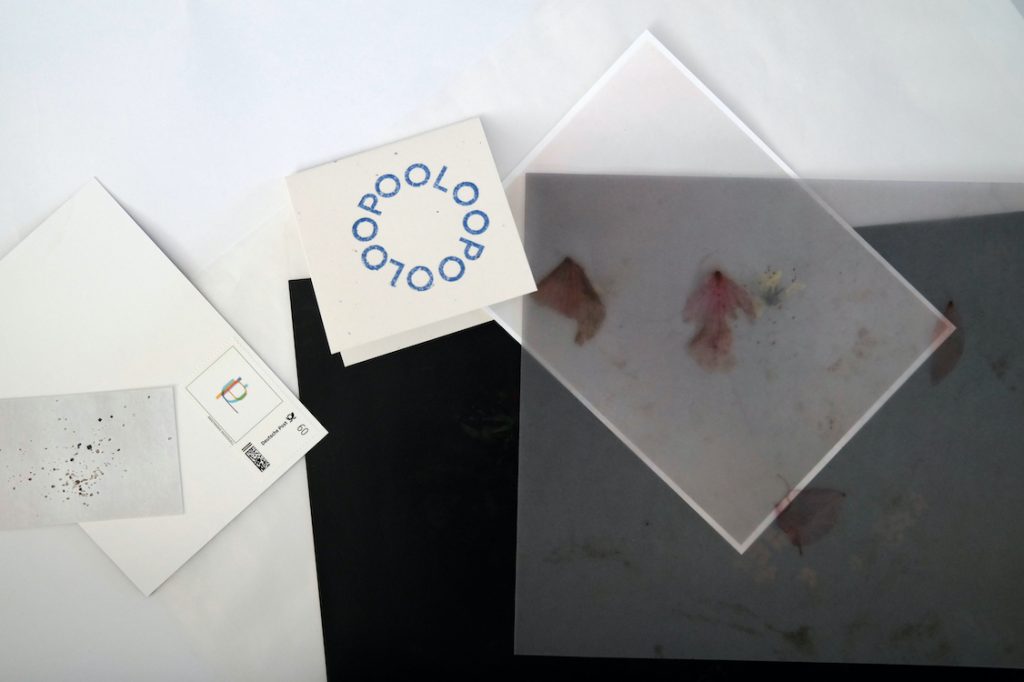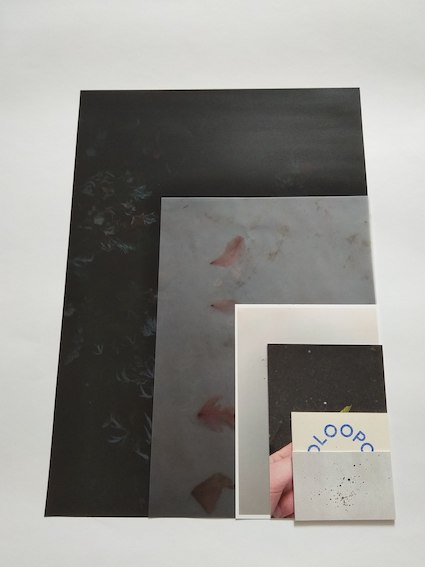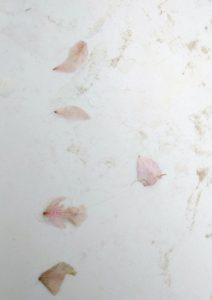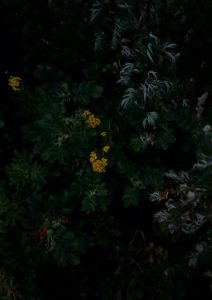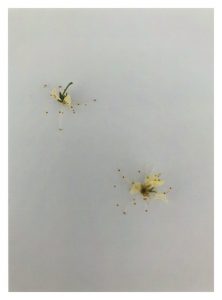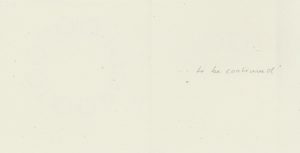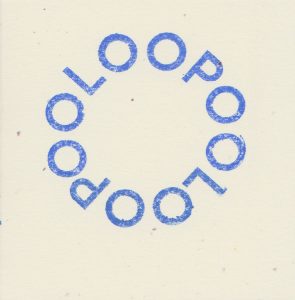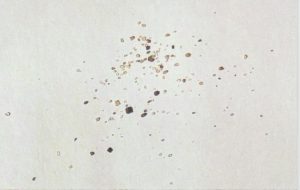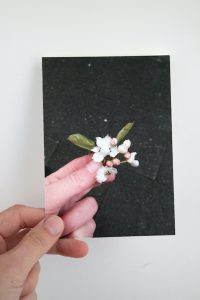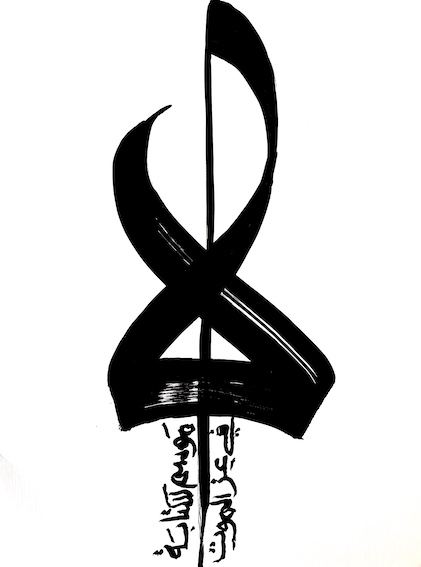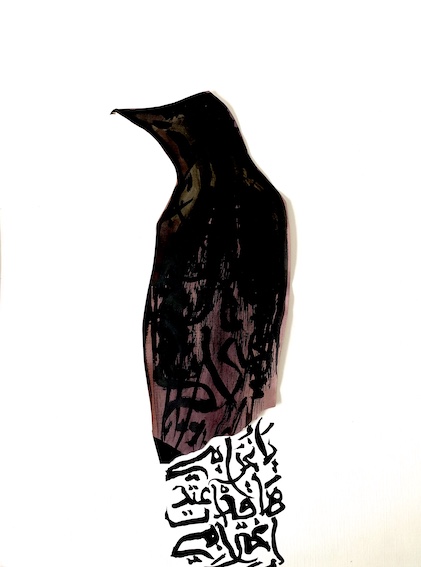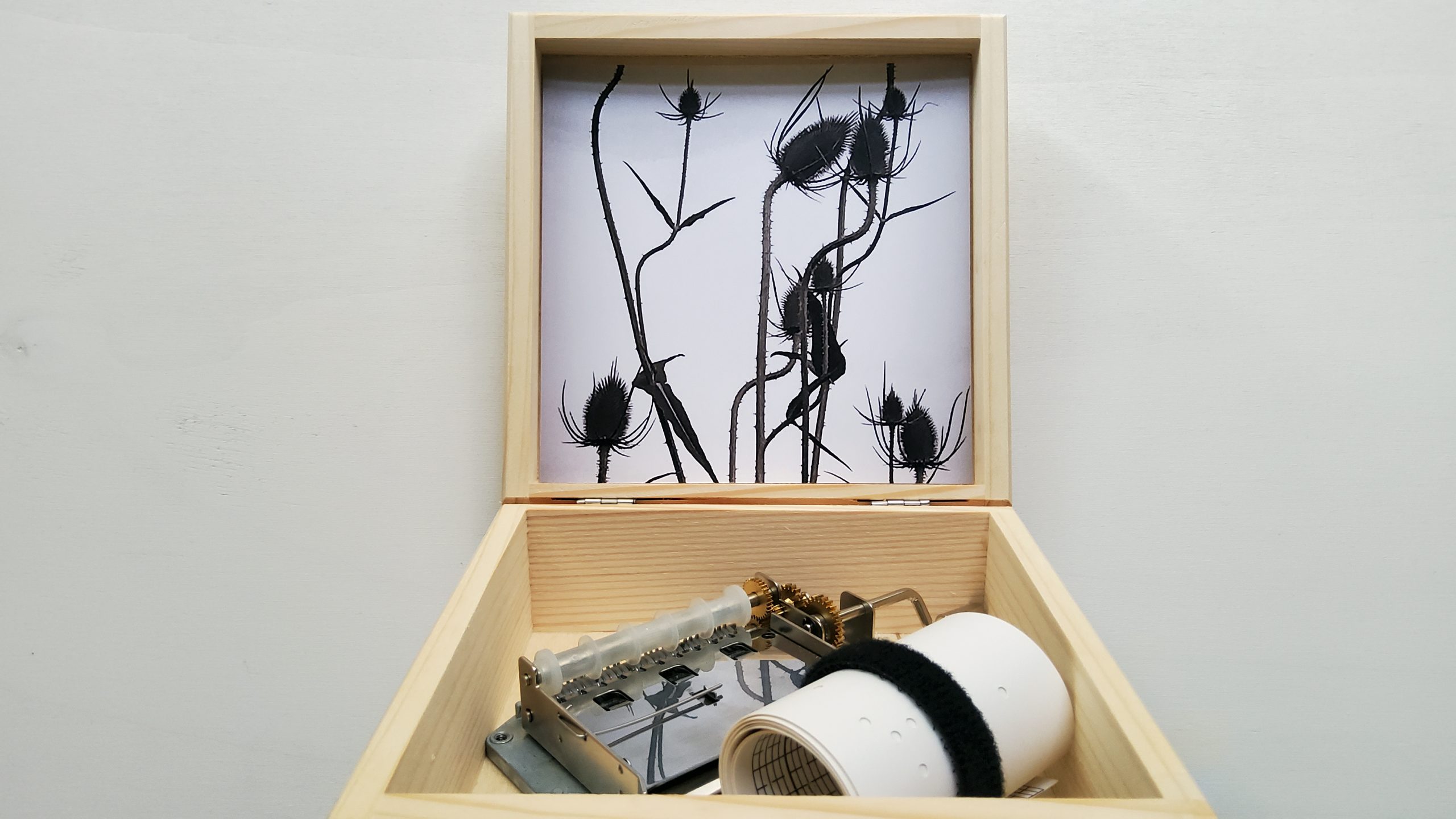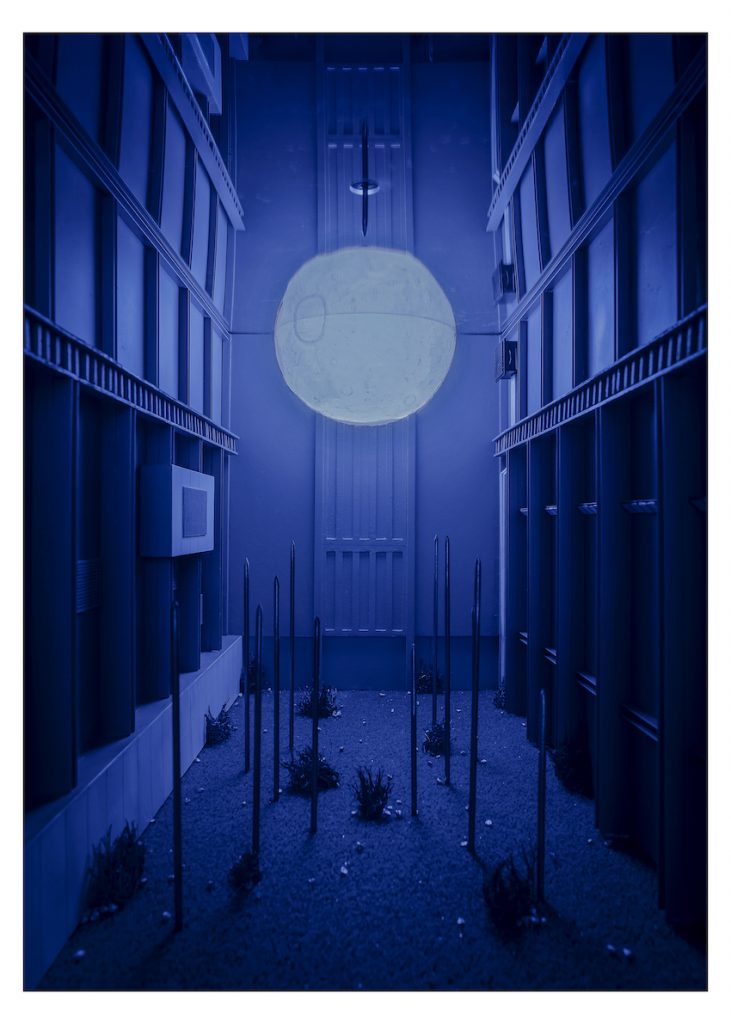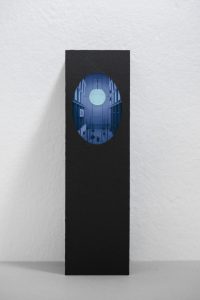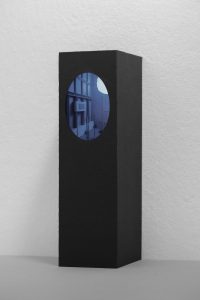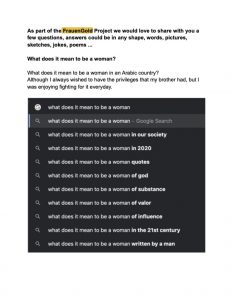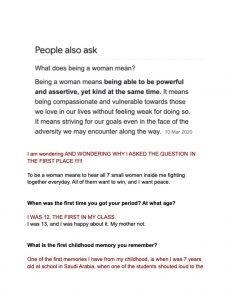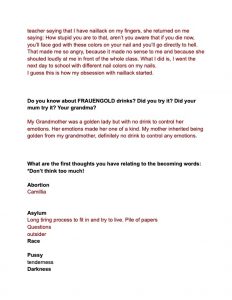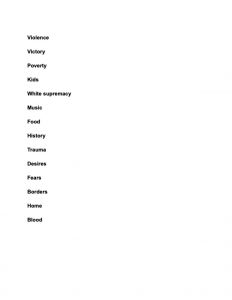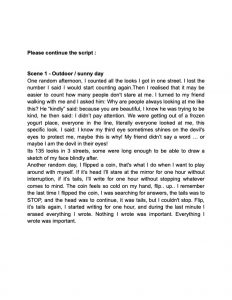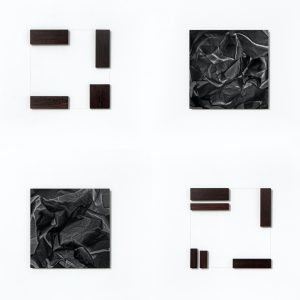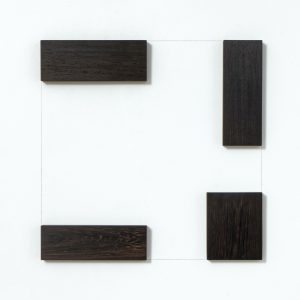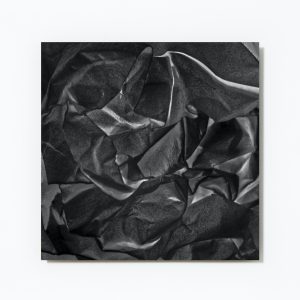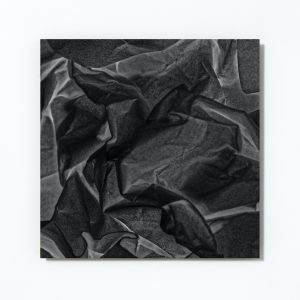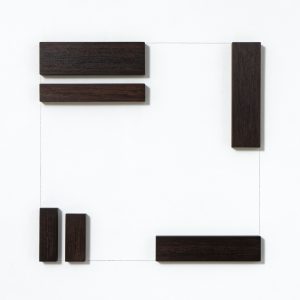participating artists:
Ina Arzensek & Sarah-Christina Benthien
Tewa Barnosa & Najwa Ahmed
Kathrin Haaßengier & Birgit Brandis
Sebastian Neubauer & Volker Crone
Razan Sabbagh & Hend El Balouty
Helga Weihs & Jürgen Wittke
on show 4 September – 31 October 2021
STATE OF THE ART is an annual digital exhibition format by galerie postel. Six artists were invited to the 2021 edition of STATE OF THE ART, Dialogues and Collaborations, to ask a partner of their choice to enter an artistic dialogue. The aim was to enhance communication to disrupt the effects of solitary confinement of the pandemic on dialogue, artistic production and cultural exchange. The results of the collaborations are presented in this exhibition.
The virtual exhibition space of STATE OF THE ART has shut its doors with the end of the exhibition 1 November 2021. All interactive formats like the google doc are closed as well. Nevertheless please feel welcome to contact us in case of questions concerning the participants and their works via kontakt (at) galeriepostel.de . The gallery program continues, please refer to our homepage for further information.
This blog website, naturally, will remain online for anyone interested to read more on the exhibition.
Ina Arzensek & Sarah-Christina Benthien
Ina Arzensek & Sarah-Christina Benthien
LÜP – Labor für Übergänge und Prozesse
Communication Set (untitled), 2021/1
Edition of 5 + 2 AP
Poster, digital print on paper, 29.7 cm x 42 cm / transparent, digital print on tracing paper, 21 cm x 29.7 cm / photo, 13.5 cm x 18.5 cm / postcard (franked), digital print on paper, 10.5 cm x 14.8 cm / folded card (stamped) 8.5 cm x 8.5 cm / business card, digital print on paper, 5.5 cm x 8.5 cm / in glassine envelope (blank) 31 cm x 44 cm
Collaboration to Ina Arzensek and Sarah-Christina Benthien is part of their artistic concept and communication their method. On of the earliest objects exhibited at galerie postel was a travel set, an exhibition „to go“ that did not only serve the owner but was meant to be sent on a journey or handed down to to others. By using it, the order of its content changed and places it went to added to its meaning.
Transient moments, the ephemeral and its traces are central to the work of the two artists who define themselves as process oriented and focused on the situational. Rays of sunshine project rainbows through a window, sand strewn on the ground is dispersed in waves by a wind so light that it is hardly to be noticed. Ina Arzensek and Sarah-Christina Benthien create the occasion for change, scatter sand, arrange permeabilities, and document waves, reflections and changes. In doing so they build awareness the faint traces of incidents, for the mannigfold details and delicate effects that go unnoticed so often.
The work on display is one branch of research of the project „Labor für Übergänge und Prozesse“ (LÜP). The way it employs the idea of communication it is going with the STATE OF THE ART 2021 exhibition’s concept to stimulate communication and dialogue, as well as offering opportunity to engage with the different parts of the set by using them, rearranging and changing them. Each part directs the user’s attention on the only seemingly incidental, the transient moment and their impacts that play such a major role in the artist’s work.
„Du bist in einem Raum.
Du hast Deine Aufgabe. Keiner sagt Dir welche Aufgabe es ist.
Du hast unendlich viele Möglichkeiten.
Du bist da.
Du bist auf dem Weg.“
This is the setting the two artists take as point of departure to their work at LÜP. The openness of the situation and the challenge to go with it is part of their concept. A communication set in times of pandemic might also be an invitation to chose a way possible while keeping the distance and with an impossibility to meet, but then again it is an invitation to start one’s own investigation.
To act changes the basis of creating, the number of possibilities of the set compels one, to chose one’s own way. Every decision will change the setting again. The format is a first: Whether to fold, roll or chose a small on? And it certainly does not end with the combination of different motives like feathers, sand or flowers. Each capturing a moment so normal that in it’s fragility would escape notice otherwise.
Tewa Barnosa & Najwa Ahmed
Tewa Barnosa & Najwa Ahmed
No season for writing in the midst of death / My crow, you normalized by displacement, 2021
Ink on paper
40 x 30 cm
To write is more than a medium. It is expression of and constitutes civilisation. It is essential like food. For author and artist Najwa Ahmed writing is basic to her work as well as her existence, means of expression, a way to heal and access to an understanding of culture and its interrelations. In her work, Tewa Barnosa explores new and old meanings employed in languages and its ancient scripts and experiments with calligraphy and scripture in different media.
To exchange artistic ideas is an experience the close friends Tewa Barnosa and Najwa Ahmed, who met in 2019, practice often, so the collaboration for STATE OF THE ART 2021 came natural to them. Their contribution focuses on topics essential to their artistic work: Writing, language as symbol of historic developments, political change and suppression and cultural context.
Two calligraphies unite text and form of writing. The first reads „No Season for Writing in the Midst of Death“. Or rather „NO season for writing in the midst of death“, as the NO dominantly towers the far smaller other letters like a repellent hand claiming „you shall not pass“ or a protective roof. The writing is in Arabic, but the way the letters are arranged from top to bottom would be typical for Tewa Barnosa’s mother tongue, Tamazight, a dialect that had long been suppressed in Libya, her country of origin, where the leading class is Arab. Only by aligning the letters, the two artists have included a potentially explosive political statement in the text.
The second calligraphy reads in the direction common in the Arab language, from right to left: „My Crow. You, normalised by displacement“. It refers to a bird special in many ways to the culture of the region. As a raven bird it stands as symbol for loss and death, but to the artists not only in case of bereavement, but symbolising also the pain felt with the loss of hope or loss as a general experience. As sacred bird the crow is highly respected at the same time, a worthy messenger.
The artists have used two different shades of ink: a brownish one forms a shape reminiscent of a crow, covered in the black calligraphy of the text. The diminishing density of the letters towards the bottom of the image extends beyond the outlines of the silhouette, giving the appearance of a fringed plumage or lace opening up and extending into the surrounding space.
In doing so, Tewa Barnosa and Najwa Ahmed interweave scripture in word and form with personal experience and traditional cultural symbols. The different levels of these writings offer insights into the universal experience of loss, into the personal history of the artists and form words and visual expression of protest against a history of colonial cultural suppression.
Kathrin Haaßengier & Birgit Brandis
Birgit Brandis und Kathrin Haaßengier
Variations on a Wild Teasel, 2021
edition 20 (2 AP), 2021
musical box, punched paper tape, photoprint in wooden box
6.2 x 16 x 15.8 cm when closed
By clicking the photo you will activate a video demonstrating the edition’s function while displaying the wild teasel’s voice. To fully benefit from the experience, please clic the photo and watch the video (3:23 min)!
The wild teasel is also called a „cistern plant“ for its ability to collect water in a bowl formed by its leaves. The heads of the prickly plant were used by weavers to roughen the woolgarments, while her roots served against many minor discomforts. Because of her frugality, her ability to collect water and her defense mechanisms against vermin she is object of fascination to Birgit Brandis and Kathrin Haaßengier. This qualifies it as symbol of resilience and helpfulness as it attracts many birds and useful insects that drink from its water and nectar covering their basic needs at the plant.
It certainly is not mere chance that Birgit Brandis and Kathrin Haaßengier discovered the wild teasel during these times when everyone – also the artists – transferred a lot of their social activity into nature making gardens a favorite place to meet. But even more so, Kathrin Haaßengier and Birgit Brandis have both been occupied with plants and the system of nature from early on in their career, in sculpture and print.
They met at Karlsruhe where both were studying with Gustav Kluge. They were friends ever since, exhibited together – not too long ago at the Griffelkunst at Otterndorf – and even shared studio spaces for a short period of time. But despite the long friendship they never collaborated on a work until now, probably also due to the different media they employ: While Kathrin Haaßengier in her kinetic sculpture explores the grey areas between sculpture and drawing, Birgit Brandis treats her paintings in a sculptural manner. Peeling and screwing her way through the layers of paint administered before, digging beneath the surface of the paint.
However different the outcome – a binding element to their art is music. Brandis defines her work by words like „sound“ of colour or „Rythm“. They are music formed by colour, unearthed layer after layer. Haaßengier’s sculptures, animated by electricity, emit sounds, soft and loud, spontaneously, intrinsinc and of individual character. A multitude of sounds that manifested itself in an object ensemble that was to be played by visitors at the gallery in 2017.
In this, the „Wild Teasel“ differs from Haaßengier’s previous works: Here, it is not the artist influencing the sculpture’s emittance through a control of an otherwise only chance-driven mechanism – in this work the sound is emitted by the plant itself: The rythm of the thorns of the plant is transferred to form the holes on the paper tape, two sheets to cover more of the plant’s stem and make it sound.
As was the case with the object ensemble at the gallery, with the Wilde Karde it is the visitor who has to interact, to set the set into motion by using the crank to the side of the multiple. Thereby he has control over the speed of the „conversation“ while the plant faces the visitor from inside the object. Interaction, Communication, with nature, with a plant, all through the universal language of music.
Sebastian Neubauer & Volker Crone
Volker Crone and Sebastian Neubauer
apparat XII
Print Edition, 12 +2 AP
FineArt Print on Hahnemühle Photo Rag
numbered, signed, without frame
22 x 30 cm (20 x 28 cm motif)
[/spb_text_block] [spb_text_block animation=“none“ animation_delay=“0″ simplified_controls=“yes“ custom_css_percentage=“no“ padding_vertical=“0″ padding_horizontal=“0″ margin_vertical=“0″ custom_css=“margin-top: 0px;margin-bottom: 0px;“ border_size=“0″ border_styling_global=“default“ width=“1/1″ el_position=“first last“]
Volker Crone & Sebastian Neubauer
apparat XII, 2021
(cinetic object/musical diorama)
200 x 45 x 90 cm
The diorama meets the viewer on eye level: 2 meters is the height of the rectangular column out of wich the moon glims slighty blue through the hole in the black structure.
For the online exhibition STATE OF THE ART 2021 the artists Volker Crone & Sebastian Neubauer not only reproduced the effect of a glance into the diorama, they orchestrated the video to enhance its effect. A panorama of a landscape en miniature opens up before the eyes of the beholder, with sound, light and moving elements. It confronts the landscape of Walter De Marias The Lightning Field with the architecture of the big turbine hall at Tate Modern where Ólafur Elíasson installed the simulation of a sun for the The Weather Project.
Exterieur meets interieur, nature architecture, the flash – an intensive experience by night – the moon, loaded with the romantic notions ascribed to it by art history. And household names of cultural history like the composers Claude Debussy with Clair de Lune and Ludwig van Beethoven (moonlight sonata) on the musical side are joined by some of the most renowned contemporary artists working with nature as subject of investigation and means of their work, Walter de Maria and Ólafur Elíasson.
But the apparently well known has been defamiliarised, the sticks belonging to De Maria’s The Lightning Field are moving to the sound of an electronic version of the classical music and instead of Elíasson’s sun illuminating the Tate Modern’s turbine hall with the warmth of orange light a blue moon shines on the turbine hall’s architecture that meets the grass of New Mexico’s high desert of de Maria’s installation.
This defamiliarisation is a prominent feature of this work changing central elements even if the work as a whole remains recognisable. By this the attention is directed to other aspects of the mash-up central theme, a research into a romantic perception of nature in music as well as contemporary art with the moon as a prominent symbol at its core through the centuries.
It is for the second time that Sebastian Neubauer presents the technique of mash up at galerie postel. To the last analogue exhibition in the spring of 2020, before the gallery was transferred into the digital, STREAMER, he contributed a heavy book. It was the analogue print of an online research into the art of mash up, meant to be read offline in a comfortable chair. With apparat XII Neubauer and Crone make use of the technique itself as means to acuminate the thesis by letting the different works and compositions meet – and clash. The intensity of this highlights the effect and idea of the experiment to the viewer.
With different effect in the by-products of the diorama: While in the diorama the artworks themselves generate a more or less constant experience interrupted by lightning, a print of a photo displays the quietness of the moonlit scene. A video at first recorded to visualise the analogue experience for the digital public has developed into a work of its own right with the second half adding drama and orchestrating effects to the original experience.
Volker Crone and Sebastian Neubauer share a love for detailed creations of film and photo settings and a conceptual turn to their art that they discovered when working on a film project together. When working on their project for STATE OF THE ART 2021, ideas of the construction of nature in art dominated soon. But the line between research and staging is thin and one easily looses oneself in the seeming wideness of the blue lit space – only to suddenly wake to reality with a flash of light – and the accompanying sound arrangement.
Razan Sabbagh & Hend El Balouty
The video embedded above is the documentation of an associative exchange between Hend El Balouty und Razan Sabbagh via a video conference tool. Please find below the sources quoted as provided by the artists:
UN VIOLADOR EN TU CAMINO – Buenos Aires 2019 / https://www.youtube.com/watch?v=WbuNo_R4ARY&list=PLL1gl_wbASayzxQCZQK3plUAnR_cdgbpY&index=1 / Women protest hijab laws in Iran / CBC News: The National / Rep. Alexandria Ocasio-Cortez (D-NY) Responds to Rep. Ted Yoho (R-FL) / C-SPAN / World’s Most Powerful Women Define Power / Forbes
Mit Frauengold wirst du wieder glücklich! / Werbung / هذا هو الاعتداء الجماعي .. احنا هنقاوم / OpAntiSH / 5 Egyptians Jailed for ‚Indecent‘ TikToks | NowThis / NowThis News / Hildegard Knef – Ich bin zu müde, um schlafen zu gehen / Hildegard Knef – Du bist mein Salz in der Suppe / نامي نامي يا صغيري – اميمة الخليل / ليه بتقصر تنورة – فارس كرم
[/spb_text_block] [spb_blank_spacer height=“30px“ width=“1/1″ el_position=“first last“] [spb_text_block animation=“none“ animation_delay=“0″ simplified_controls=“yes“ custom_css_percentage=“no“ padding_vertical=“0″ padding_horizontal=“0″ margin_vertical=“0″ custom_css=“margin-top: 0px;margin-bottom: 0px;“ border_size=“0″ border_styling_global=“default“ width=“1/1″ el_position=“first last“]
Hend El Balouty and Razan Sabbagh for their work made use of the digital space so prevalent in pandemic times in all aspects of life and most likely to stay. By means of a video conference tool they met three times to brainstorm and shared ideas, content, events, videos, news and clips. They have recorded this exchange and finalized the process in a video, that documents the associative discourse and serves as a basis for the communication process the visitors will be asked to enter.
Razan Sabbagh had contributed to exhibitions at galerie postel before: Visitors may remember the Holding the Memory installation in the front window as part of the IN BETWEEN exhibition and the performance she contributed to last year’s STATE OF THE ART already took on the idea of conversation. Hend El Balouty, too, is a political and performance artist, to initiate a discussion by a political artistic action is central to both artists‘ practice.
The title FrauenGold refers to a restorative advertised in the 70ies for women to compensate stress. The name and images of the included commercial are telling – and refer to the works central question, that of the role and rights of women, in history and today, from the personal point of the artists and worldwide.
The video presented in the exhibition is documentation and part of the performance which in the following is opened to the public: Following the link below, visitors of the exhibition will find a google document open for anyone to contribute. In this document, the artists have already written down notes, ideas, keywords, headings that could lead to further aspects of the discussion. Visitors are invited to join in and add their own ideas:
The document will stay open for the duration of the exhibition and will be taken care of by the artists who will read new additions and react towards them. Through this the document will grow and change. With the end of the exhibition, the document will be closed and its final version prepared for print that as edition will be available via the gallery and will carry the discussion in a time and space beyond the exhibition as documentation of the process, as part of the artwork and as political and artistic impulse.
If you are interested in this edition or like to be informed of the outcome, please do not hesitate to contact us via kontakt (at) galeriepostel.de !
Helga Weihs & Jürgen Wittke
weihs wittke 1 – 2021
150 x 150 x 2.2 cm
photographies by Jürgen Wittke in pigment print on Photo Rag/Alu-Dibond and wall objects by Helga Weihs, in wenge, oil, graphite
The work consists of four single Elements that have been joined in context of the preparations for STATE OF THE ART 2021 and are only available in this configuration. To enable the viewer to approach each work in detail, they nevertheless have been listed seperately below, clicking on th image will enlarge the image.
Helga Weihs, WO-5-2020, wenge, oil, graphite, 50 x 50 x 2.2 cm
Helga Weihs and Jürgen Wittke have known and valued each other’s work for many years. In fact, many might only know a few of Helga Weihs‘ works only through the eyes of Jürgen Wittke, as he took many of the photographs of installations by Helga Weihs that found their way into the catalogues.
Jürgen Wittke, faltung 1, 2021, photography, pigment print on Photo Rag/Alu-Dibond, 50 x 50 x 2.2 cm
Jürgen Wittke managed to capture Weihs’s works in a conclusive way transmitting her intention: Their transparencies and penetrabilities, their changing perspectives, the work’s relation to the perception of space that is defined not only by architecture but also by the visitor’s movements. The photographer himself on the other hand explores structures and perspectives and – as an important element for his line of work – light.
Jürgen Wittke, faltung 2, 2021, photography, pigment print on Photo Rag/Alu-Dibond, 50 x 50 x 2.2 cm
In the collaboration all these aspects meet: Helga Weihs uses the wall as anker in the architectural space – the graphite drawing defines the outlines of the sculpture on the wall, in space. The rhythm of the mounted elements made from oiled wenge defines space, elements of 2.2 cm depth are change with perspective in real space.
Helga Weihs, WO-11-2020, wenge, oil, graphite, 50 x 50 x 2.2 cm
Rhythm and abstract lines dominate the work by Jürgen Wittke, too. Only through light the depth of foldings is perceptible. Colour was reduced in the photos of the composition to enhance the dialogue with the usually brownish colour of the wenge. Similar in form and size, the element respect and stress boundaries between the works, approach each other, create tensions, open up to the outside or obturate themselves.
Besides the obvious differences between wood sculptures and photography quite a few aspects of different gradation contribute to a tension-filled dialogue between the works that came together in a telephonic and email exchange. Folded paper lines oppose in their diffuse rhythm that Helga Weihs understands as polyphone, using a musical term, the clear rhythm of Weihs‘ compositions. And while Wittke refers to a real object – in this case a paper derived from wood – Weihs’s objects are built in relation to mathematical lines therefore rather to be found in the category of concrete sculpture than abstraction.
This dialogue demonstrates the extend to which similarities and deviations can contribute to enlighten the view of another’s work and in this in how much it can keep up a dynamic exchange between the works.


